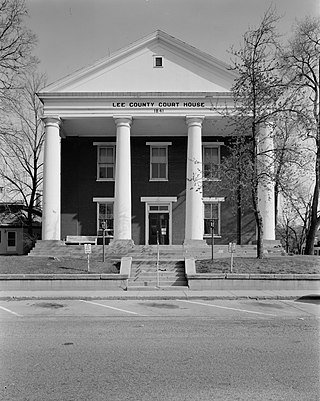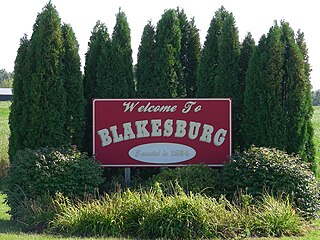
Winneshiek County is a county located in the U.S. state of Iowa. As of the 2020 census, the population was 20,070. The county seat is Decorah.

Wapello County is a county located in the U.S. state of Iowa. As of the 2020 census, the population was 35,437. The county seat is Ottumwa. The county was formed on February 17, 1843, and named for Wapello, a Meskwaki chief.

Tama County is a county located in the U.S. state of Iowa. As of the 2020 census, the population was 17,135. Its county seat is Toledo. The county was formed on February 17, 1843 and named for Taimah, a leader of the Meskwaki people.

Pottawattamie County is a county located in the U.S. state of Iowa. At the 2020 census, the population was 93,667, making it the tenth-most populous county in Iowa. The county takes its name from the Potawatomi Native American tribe. The county seat is Council Bluffs.

Polk County is located in the U.S. state of Iowa. As of the 2020 census, the population was 492,401. It is Iowa's most populous county, and home to over 15% of the state's residents. The county seat is Des Moines, which is also the capital city of Iowa. Polk County is included in the Des Moines–West Des Moines, IA Metropolitan Statistical Area.

Lee County is the southernmost county in the U.S. state of Iowa. As of the 2020 census, the population was 33,555. The county seats are Fort Madison and Keokuk. Lee County is part of the Fort Madison–Keokuk, IA-IL-MO Micropolitan Statistical Area. It was established in 1836.

Henry County is a county located in the U.S. state of Iowa. As of the 2020 census, the population was 20,482. The county seat is Mount Pleasant. The county was named for General Henry Dodge, governor of Wisconsin Territory.

Hamilton County is a county located in the U.S. state of Iowa. As of the 2020 census, the population was 15,039. The county seat is Webster City. The county was named to honor William W. Hamilton, a President of the Iowa State Senate.

Fremont County is a county located in the U.S. state of Iowa. As of the 2020 census the population was 6,605, making it the state's seventh-least populous county. The county seat is Sidney. The county was formed in 1847 and named for the military officer John C. Frémont.

Crawford County is a county located in the U.S. state of Iowa. As of the 2020 census, the population was 16,525. Its county seat is Denison. The county was named for William Harris Crawford, U.S. senator from Georgia and United States Secretary of the Treasury.

Benton County is a county in the U.S. state of Iowa. As of the 2020 census, the population was 25,575. Its county seat and largest city is Vinton. The county is named for Thomas Hart Benton, a U.S. Senator from Missouri.

Delta is a city in Keokuk County, Iowa, United States. The population was 264 at the 2020 census.

Harper is a city in Keokuk County, Iowa, United States. The population was 118 at the time of the 2020 census.

Hayesville is a city in Keokuk County, Iowa, United States. The population was 41 at the time of the 2020 census.

Keota is a city in Keokuk and Washington counties, Iowa, United States. The population was 897 at the time of the 2020 census.

Sigourney is a city in Keokuk County, Iowa, United States. The population was 2,004 at the time of the 2020 census. It is the county seat of Keokuk County. Keokuk County Courthouse is located in the Public Square Historic District. Both are on the National Register of Historic Places.

Blakesburg is a city in Wapello County, Iowa, United States. The population was 274 at the 2020 census.

Chillicothe is a city in Wapello County, Iowa, United States. The population was 76 at the 2020 census.

Kirkville is a city in Wapello County, Iowa, United States. The population was 157 at the time of the 2020 census.

Eddyville is a city in Mahaska, Monroe, and Wapello counties in the U.S. state of Iowa. The population was 970 at the time of the 2020 census.


























